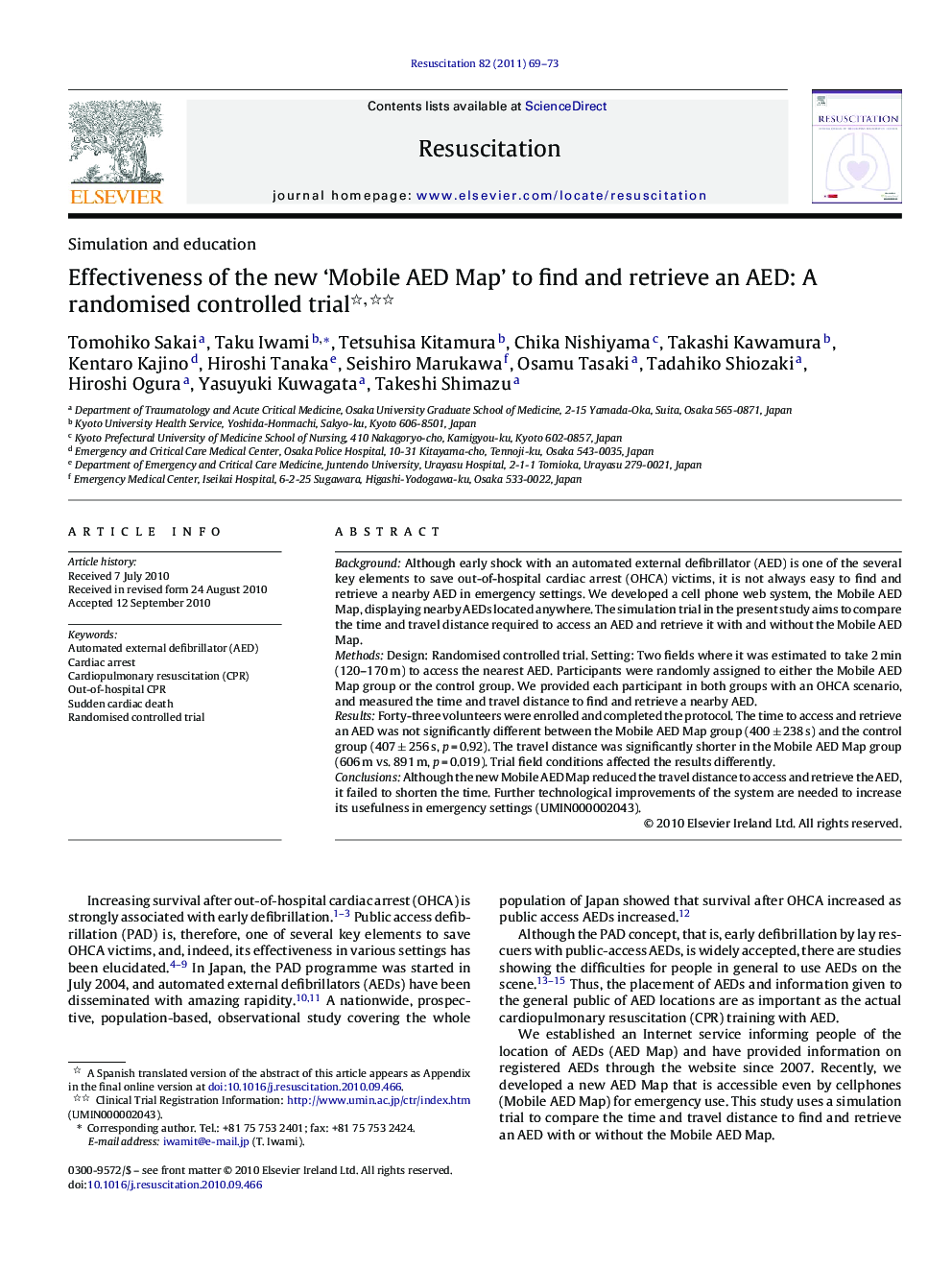| Article ID | Journal | Published Year | Pages | File Type |
|---|---|---|---|---|
| 5999183 | Resuscitation | 2011 | 5 Pages |
BackgroundAlthough early shock with an automated external defibrillator (AED) is one of the several key elements to save out-of-hospital cardiac arrest (OHCA) victims, it is not always easy to find and retrieve a nearby AED in emergency settings. We developed a cell phone web system, the Mobile AED Map, displaying nearby AEDs located anywhere. The simulation trial in the present study aims to compare the time and travel distance required to access an AED and retrieve it with and without the Mobile AED Map.MethodsDesign: Randomised controlled trial. Setting: Two fields where it was estimated to take 2 min (120-170 m) to access the nearest AED. Participants were randomly assigned to either the Mobile AED Map group or the control group. We provided each participant in both groups with an OHCA scenario, and measured the time and travel distance to find and retrieve a nearby AED.ResultsForty-three volunteers were enrolled and completed the protocol. The time to access and retrieve an AED was not significantly different between the Mobile AED Map group (400 ± 238 s) and the control group (407 ± 256 s, p = 0.92). The travel distance was significantly shorter in the Mobile AED Map group (606 m vs. 891 m, p = 0.019). Trial field conditions affected the results differently.ConclusionsAlthough the new Mobile AED Map reduced the travel distance to access and retrieve the AED, it failed to shorten the time. Further technological improvements of the system are needed to increase its usefulness in emergency settings (UMIN000002043).
